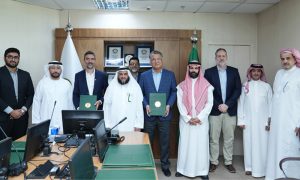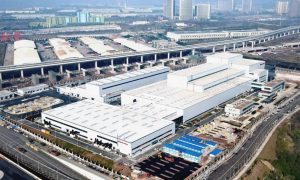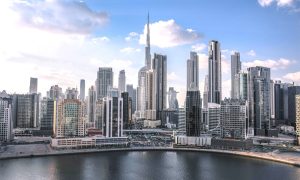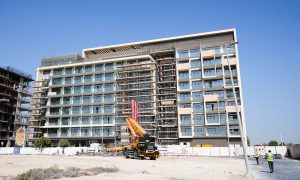Dr Nadhem bin Taher, Etihad Rail
Dr Nadhem Bin Taher, executive director of the National Transport Authority, talks to Gavin Davids about the Etihad Rail project.
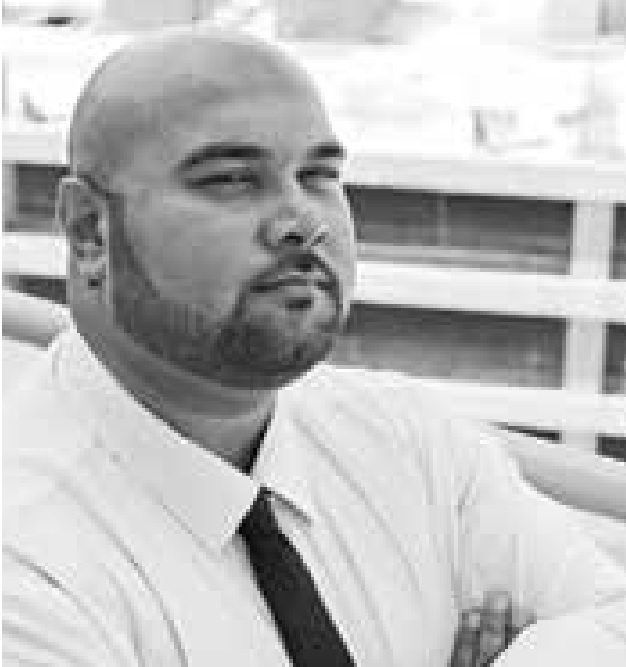

By moving 1,500 trucks a day to a couple of trucks by heavy rail, will save money, reduce the number of accidents and fatalities, pollution, says Dr Nadhem
The National Transport Authority (NTA) is the Abu Dhabi-based, state-wide transportation body that oversees the development of the UAE’s land and maritime transportation systems. Set up by Federal Law number 1 of 2006 – Article 4, the authority’s responsibilities include the proposal of general policies, bill laws and regulations for marine services and land transport, in coordination with the relevant authorities, and the supervision of their implementation.
Furthermore, the NTA is tasked with overseeing the organisation and improvement of the UAE’s land and sea transport, which in turn includes ‘submitting the suggestions necessary’ for the development of the federal roads construction works.
Obviously, this is a vast scope of work, but with the announcement that the UAE intends to invest $25 billion into its railroads and metro, the NTA’s job just became a whole lot harder. With the Minister of Public Works and the chairman of the NTA, Abdulla Al Nuaimi, determined to make the UAE a hub for transport and logistics, the pressure is on.
Earlier this year, the Authority announced that a new national law would be developed by 2014, which pave the way for the mammoth investment into the rail sector. The law is expected to cover safety regulations and operational standards. It is expected to be passed in time for the launch of the country’s first railway line.
One of the men tasked with overseeing the establishment and development of this hydra of laws, regulations and projects is Doctor Nadhem Bin Taher, executive director at the National Transport Authority.
He sat down with Deputy Editor Gavin Davids to discuss how the NTA is pushing forward with plans for the Etihad Rail project and the wider reaching impact of the project.
Firstly, he clarifies that the $25 billion investment announced by the Minister of Public Works, is intended to cover the total investment into the rail sector, in the UAE.
“We have, in the MENA region, a total of $250 billion. 10% of that is within the UAE, which is $25 billion. In the rail industry, we have two things; light trains, which includes metros, monorails, trains – and heavy rail, which takes passengers and freight. Etihad Rail is around $11 billion of that investment, and then Abu Dhabi has approved $8 billion for the emirate’s light rail. And then we have an expansion which is worth $2 billion in Dubai, so a total of $25 billion when you take into account inflation rates and new technology. $25 billion is the original budget, which is estimated to be 10% of the total of the MENA (investment),” Dr Nadhem explains.
“It doesn’t have to be just inflation, there are new products coming. The project could be completed within six or seven years from now. For sure there are new technologies, and you need to have some spare amount of money available for new tech, new wagons, etc that may be implemented, so this is (the figure) that is envisioned by the UAE government.”
Some of these new technologies have come from various research trips that the NTA and the various bodies associated with the UAE’s rail projects have undertaken. The collaboration between the country’s regulatory bodies is crucial to the success of such complex operations, Dr Nadhem points out that the wide range of projects such as Etihad Rail makes it difficult for one body to control things.
“We work as the regulator for the rail industry. However, the operator and construction work, the railway infrastructure company and the railway construction company – this is done by Etihad Rail, which is a government owned company responsible for building, managing and operating the trains,” he says.
“However, we do some teamwork between the federal government and the local government because we have seven departments of transport, so we work as a team because we want the decision to be taken by the higher level, as envisioned by the UAE government and then cascaded to the local authorities in the Emirates.”
“We’ve done some benchmarks in the East and West and seen new technology – in South Korea, Taiwan and China. We’ve seen the KTX, which is the high speed rail in South Korea and how they’ve developed it from 300kmph to around 350km/h. We also went to China and seen new technology called Maglev, which is a technology where the speed of the train is around 430km/h. So we’ve seen different technologies and what is the cost and value for money, and what is the supply and demand and how we can bring in people to use mass transportation.”
So that is why the spare money is needed then. Dr Nadhem highlights that the spending is likely to encompass everything from high-speed to light-rail. However, this doesn’t mean that there isn’t a plan in place. He points out that the NTA and the other regulatory bodies involved are taking the project in phases, with each one being given the attention and concern it deserves.
“All these things are being studied right now and the most important thing right now is the first phase, Habshan, in the west of the region. (It’s a) very strategic project because by moving the sulphur from Habshan, even to the eastern region, takes around 1,500 trucks a day. So by moving 1,500 trucks a day to a couple of trucks by heavy rail, will save money, reduce the number of accidents and fatalities, pollution, etc,” he says, laying out the grand ambitions for the project.
“Then there’s the second and third phases, where we connect (with) the GCC network and when it will be connect with Khalifa port. For all these, the first phase is the backbone of the project. We have the national network and the international network. The international network comes all the way from Kuwait to Oman, this is 2,170km, including the 580km in the UAE network that will take them from the Western region all the way to Muscat,” Dr Nadhem continues.
This is where things get complicated. With the rest of the GCC also working on their own railway projects, creating a region-wide railway network is a challenge unlike any that has come before. Not only do governments have to focus on building their own railways, but they also have to be mindful of their rate of progress, and that of their neighbours.
And that doesn’t even consider the host of other logistical issues, such as travellers across country borders and immigration reform. The NTA is involved in all aspects of this, and it’s clear they’ve got a massive task on their hands.
“KSA is working right now, Qatar is working, Oman is working, and we’re working on it. Now we’re studying the connection and interoperability issues, (such as) immigration issues, trip issues, taxes, customs, and all these issues are being studied right now to see how we can go on further.”
“We are working with the GCC members to establish the GCC Railway Authority, which would regulate the whole interoperability issues and the connections between each country. This has been discussed in the GCC Council and will soon be raised with the GCC Supreme Council, I don’t have the exact date, but this is the plan,” he reiterates.
Citing the example of Europe, Dr Nadhem adds that there are various scenarios and possibilities being discussed across different departments and authorities, such as the Ministry of Interior, Ministry of Immigration, the Customs Authority and the NTA, over the issue of immigration.
What would allow for the free flow of travellers across the GCC would be a visa based on the Schengen model, but Dr Nadhem maintains that there is still plenty of work to be done before that is even considered.
“We think that it (a GCC wide railway) will be coming by 2018. (However), we can’t control what Qatar (for example) will do. These are operational issues; Etihad Operations, which will take care of these decisions. We are planning from now, we can’t wait till they finish. We put all this in a risk matrix and take the issues and tackle them one-by-one, so that by the time the rail is already established, we’ll have all the answers to these questions, such as the fares and the customs,” he asserts. “What we’re talking about here is to have a complete GCC plan by 2018, so we definitely need to have our own by then. We’re fighting with time, if you will. Etihad Rail takes care of all these issues and we’re the specialised regulators taking care of the vision of the UAE government.”






